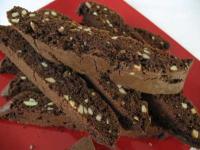Food: Measuring success
- Metric Tags:
EDITOR-in-chief of Gourmet Magazine, Ruth Reichl, recently indicated that a staggering 24000 cookbooks were published last year in the US.
This might only be impressive to those of us who read food and cookery books for fun. One such book, Chocolate Chocolate is packed with delightful recipes containing chocolate in all its guises. Written by a Cordon Bleu alumnus, Lisa Yockelson, the impressive book tempts one to sprint out and buy the little bits and bobs necessary to make an array of bar cookies, fabulously creative cupcakes or large, lusciously decadent chocolate cakes.
South Africans are comfortable with the metric system, and it is only through necessity that we deign to use recipes featuring the American measuring system. It was pure frustration that made me memorise recently exactly how much a “gill” is. The moment one is faced with having to convert ounces to grams or pounds to kilogrammes a numbing sense of discouragement sets in, even though conversions between the metric and imperial systems are relatively simple.
It is when faced with American recipes that true desperation forces us to grab for our calculators, conversion tables or, lately, the kitchen PC with access to the web.
The problem lies in the American measuring system’s use of volumes, even when measuring mass. So when faced with an American recipe, the likelihood is there that you will be required to measure most of the ingredients in cups and spoons — even basics (such as flour) that are in fact measured with infinitely greater accuracy by weighing them.
Finding a reason for this American quirk has proven difficult, but the general assumption could be that not all households have access to a scale that could measure small amounts — something not so accurately done on a bathroom scale.
While the home cook may well understand that a cup of flour has the same volume as a cup of salt, a problem arises when the weight of these volumes do not correlate — one cup of white flour weighs only 125g, whereas table salt weighs 290g. If weight and volume for all ingredients were the same, we would have no problem.
Yockelson’s Chocolate Chocolate comes only with American measurements, even though recipe methods are written in an easy and informative style that will not leave the cook confused or frustrated — except for having to establish what a “stick” of butter is.
One would think the writers of those 24000 cookery books mentioned earlier would spare us a thought, and not expect us to try to measure eight tablespoons of butter without the benefit of a handy kitchen scale.
The following is a recipe from Chocolate Chocolate for Classic Toffee Bars, which have been converted to the metric system and use local South African ingredients.
South African Caramel Biscotti Triangles
Ingredients:
120g melted cooled butter
60g treacle sugar
60g white granulated sugar
2 eggs
10ml vanilla essence
120g normal cake flour
2,5ml baking powder, bicarbonate of soda and salt (¼ teaspoon each)
3 x 100g slabs of Beacon Caramel Biscotti chocolate
2 x 50g Trumps tartrazine free chocolate drops
80g desiccated coconut Method Lightly spray the inside of one large (25cm x 18cm) or two smaller (15cm x 15cm) baking trays with nonstick spray.
Pre- heat the oven to 180°C.
Using the K-beater attachment of a Kenwood mixer, mix together the melted butter, treacle sugar, granulated sugar and vanilla. Remove bowl and sift together (on top of the mixture in the bowl) the flour, baking powder, bicarb and salt.
Break two of the packets of caramel biscotti into the batter and lightly mix — then add the chocolate drops and coconut.
Scrape into the prepared baking tray, bake for 20 minutes, remove and quickly sprinkle over the remaining 100g of broken caramel biscotti. Bake for an additional 10 to 15 minutes.
Cool for 30 minutes, cut into squares of equal size and then divide the squares into triangles.
Store in an airtight container and use within two to three days.
source: http://www.businessday.co.za/articles/Content.aspx?id=81287

Comments
1
1
1
1